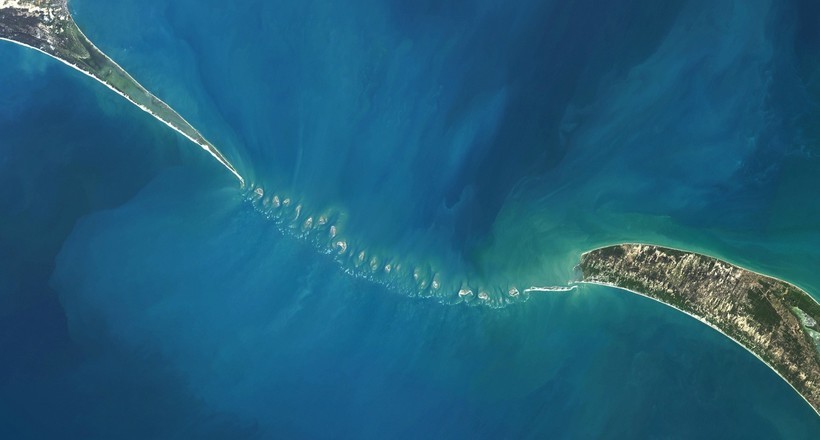Rameswaram (also spelled Ramshwaram) is one of the holiest islands of India, located in the state of Tamil Nadu, in the far south of the country, near the border with Sri Lanka. This island is considered a place of great spiritual power and pilgrimage for millions of Hindus, as it is deeply connected with the …
Rameswaram (also spelled Ramshwaram) is one of the holiest islands of India, located in the state of Tamil Nadu, in the far south of the country, near the border with Sri Lanka. This island is considered a place of great spiritual power and pilgrimage for millions of Hindus, as it is deeply connected with the epic Ramayana and the heroic deeds of Lord Rama.
Legends and Spiritual Significance
The Ramayana and the Bridge of Rama (Rama Setu)
According to the Ramayana, it was from here that Lord Rama, along with his brother Lakshmana and the devoted Hanuman, set out to wage war against the demon Ravana, who had abducted Sita. Here Rama built the great bridge across the ocean — the Rama Setu or Adam’s Bridge — by which his army of vanaras reached Lanka. Even today, in the strait, one can see chains of sandbanks, which devotees believe to be the remnants of that very bridge.
Rama’s Repentance
After defeating Ravana, Rama realized that he had slain a great brahmana (for Ravana was a rishi endowed with profound knowledge). To purify himself of this sin, Rama installed a Shiva lingam on the island and performed puja. Thus, Rameswaram became a sacred site of worship for both Shiva and Rama.
The Legend of the Two Lingams
It is said that Rama sent Hanuman to the Himalayas to bring a lingam for Shiva. While Hanuman was away, Sita formed a lingam out of sand and seawater. When Hanuman returned with a Himalayan lingam, Rama installed both side by side. Since then, both have been preserved in the Ramanathaswamy Temple.
Thus, Rameswaram is where Vishnu and Shiva, Rama and Hanuman, masculine strength and feminine devotion, purification and forgiveness meet.

Rama Setu — The Bridge of Time and Eternity
At the roaring ocean shore, Lord Rama raised a bridge of stones and faith — Rama Setu, also known as Adam’s Bridge. Across it, his army — brothers, warriors, and the noble vanaras led by Hanuman — marched toward Lanka to fight Ravana and rescue Sita, radiant as Dharma itself.
When Ravana fell in battle, Rama felt the weight in his heart, for the defeated enemy was not only a demon king but also a brahmana of a great lineage. Rama then turned to Shiva, Lord of Destruction and Purification, and offered prayers to cleanse himself of sin.
Hanuman was sent to Mount Kailash to bring a lingam. But the ritual time was approaching, and Rama allowed Sita to fashion one from sand and seawater. This became the Ramanatha Lingam, the sacred image shaped by the Goddess of devotion herself.
Hanuman returned with the Himalayan lingam, distressed that his service had been in vain. Rama, with wisdom and love, placed it alongside the first, naming it the Vishva Lingam, to honor Hanuman’s devotion. Thus, two lingams stand together in worship — making Rameswaram sacred to devotees of both Shiva and Vishnu.

Ramanathaswamy Temple — An Ocean of Stone and Prayers
In the 12th century, the Cholas built a great temple in honor of these events. At its heart lie the two lingams, sanctified by Rama and Sita themselves. Later, in the 17th century, the Sethupathi kings adorned it with towers and endless corridors.
The temple stretches 264 meters long and 200 meters wide. Its eastern gopura rises 38 meters high, like a stairway to the heavens.
But the wonder of wonders is the Ramanathaswamy corridor — the longest in India, nearly 1.5 kilometers in length. Four thousand carved stone pillars, each 3.6 meters high, line the path like legions of eternity. Walking through, one feels as though the very heartbeat of the cosmos echoes in each step.
Rameswaram is one of the 12 Jyotirlingas of Shiva and one of the four holy Char Dham pilgrimage sites (along with Dwarka, Puri, and Badrinath). To undertake pilgrimage to Rameswaram is said to free the soul from the cycle of rebirth (samsara).

The Mystery of the 22 Sacred Wells
The temple also preserves the mystery of 22 sacred wells (tirthas). These waters are not ordinary — each is believed to carry unique spiritual power, capable of cleansing sins of body, mind, and speech.
According to legend, when Rama prayed for forgiveness, Shiva blessed the land, and springs emerged from the sand. Each well embodies the energy of an element and a unique force of purification.
Some waters wash away sins of speech,
Others cleanse the errors of the mind,
Still others purify the body.
When a pilgrim bathes in all 22 wells, it is as if they are reborn — free, radiant, filled with purity.
The number 22 itself is symbolic:
It unites the solar and lunar calendars,
It represents the passage from the material to the spiritual,
It is the number of completion and new birth.
Each well is unique in taste and temperature, though they stand side by side — a mystery seen as divine blessing.

Rama Setu — Legend and Truth
Ancient chronicles say that between India and Sri Lanka stretched a mighty causeway. Even as late as the 15th century, its outlines were visible above the waves, though the ocean eventually swallowed it.
Scientists still debate its age — some say centuries, others millions of years. But sages declare: it was built in Treta Yuga, the age when gods walked the earth.
According to the Ramayana, the bridge was raised not by mortal hands but by divine will. Hanuman and the vanaras placed stones inscribed with Rama’s name into the sea, and the waters held them afloat. Thus, it became a bridge of faith — uniting the world of mortals and the world of the divine.

A Symbol of the Eternal Path
Today, only sandbanks and coral reefs remain between India and Lanka, but pilgrims see not ruins, but an eternal path of the soul, connecting illusion and liberation.
Rama Setu reminds us:
Faith can unite the impossible.
The Name of God can make stones float on water.
A bridge built by the heart can never disappear.
The ocean may have hidden it from sight, but not from memory, nor from the Ramayana, nor from the hearts that repeat Rama’s name.
✨ Even now, Rama Setu shines as a path of light stretched across time — a bridge that leads the soul from the mortal to the eternal.






